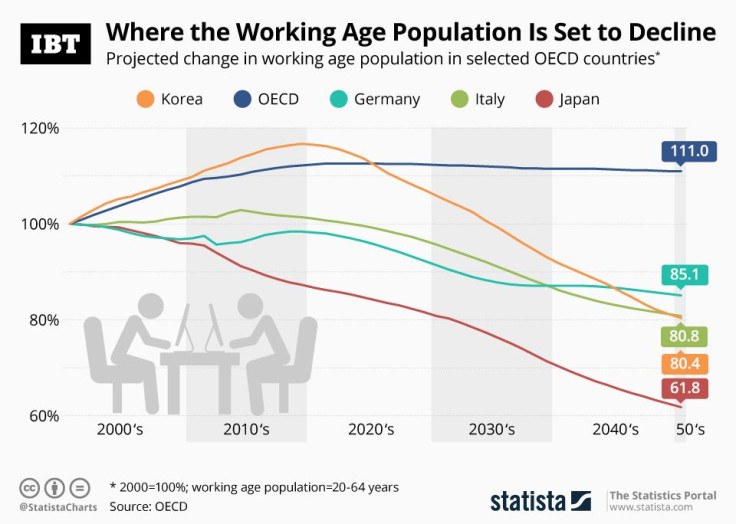Infographic: A Decline In Working Age Population Concern Some OECD Countries

Within the OECD, Korea, Japan, Germany and Italy are among the countries most heavily affected by a decline of their working age populations. Taking each country’s population between the ages of 20 and 64 in the year 2000 as a base, the OECD calculated that by 2050, that population would only be around 80 percent of its original size in Korea and Italy. In Japan, the country most heavily affected, that number would be just over 60 percent.
For the OECD in total, the size of the working age population is actually expected to increase and be at 111 percent of the 2000 figure in 2050. The growth is driven by countries with strong birth rates and large populations, like Australia, Turkey and the United States.
While Japan’s working age population has been in decline since the 1990s, Korea’s working age population was growing until up till now but is expected to start its decline this year. For countries experiencing a decline of working age population, problems like underfunded social systems, tight labor markets and an overstretched medical and care sector are common.




















